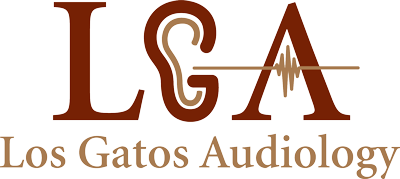If you have hearing loss, it is important to know your rights and the resources you have access to that support your hearing health. Nearly 1 in 6 people have some degree of hearing loss, a medical condition that reduces capacity to hear and process speech as well as sound. This impacts spatial awareness and safety as well as how you navigate daily environments. There are several rights, services, and technologies that increase accessibility and support hearing in both public and private spaces. Empower yourself and prioritize your hearing health by knowing about these rights and fully maximizing them.
- Americans with Disabilities Act (ADA): you have likely heard about the ADA but did you know that it applies to people with hearing loss? Passed in 1990, the ADA is a crucial piece of civil rights legislation that does three important things: prohibits discrimination on the basis of disability, requires employers to provide workplace accommodations, and mandates that public spaces meet accessibility standards. The ADA defines disability as a physical or mental condition that affects one’s capacity to perform or engage in major life activities and this extends to hearing loss. Employers must provide workplace accommodations that make the work environment equally safe and accessible. Workplace accommodations can include a range of resources and technologies like hearing protection, live captioning technologies, a hearing aid compatible phone, adjusting workspace etc.
The ADA also outlines that public spaces meet accessibility requirements. This includes
providing alternative means and access points for communication in environments
where “audible communication is used to provide direction or critical information”. This
includes spaces like banks, airports, auditoriums, theaters etc. which are required to use
assistive listening symptoms that amplify sound in different ways. A common way public
environments do this is by using hearing loop systems which is a technology that is
compatible with hearing aids. It allows sound to directly reach hearing aids that can then
process that sound in specific ways to meet the wearer’s hearing needs.
- Hearing Aid Compatibility Act (HAC): first passed in 1988, the HAC is all about devices that are used to communicate including phones. The FCC (Federal Communications Commission) which oversees these accessibility standards requires phones to be compatible with hearing aids. Initially focused on phones, the HAC has been updated and expanded to include various devices we use today. This includes smartphones which are also required to have accessible features that support people with hearing loss (easy volume control settings, amplification etc.).
- 21st Century Communications and Video Accessibility Act (CVAA): the CVAA was passed in 2010 and outlines accessibility standards for telecommunications. This encompasses communication platforms like email and instant messaging tools, as well as common devices. A few requirements that the CVAA mandates include:
- Closed captioned services must be provided on all electronic devices that are 13 inches and smaller – cell phones, laptops, tablets etc.
- Communication platforms (email for example) need to be accessible for people with disabilities which includes hearing loss.
- Devices that record movies/shows (DVR for example) must also provide closed captioning services.
- Air Carriers Access Act (ACAA): the ACAA outlines standards specific to air travel which airports, airlines, and services associated with travel are required to meet. The ACAA requires various services and accommodations including:
- Services like making reservations and customer service inquiries must be accessible for people with hearing loss. One way this requirement is met is by offering text and email alerts.
- If a person with a disability (hearing loss included) requests a safety assistant, this service must be available and accessible.
- Service animals.
- Closed captioned services must be provided on monitors in airports and on flights.
These are a few significant rights that are intended to support people with a range of disabilities including hearing loss. Knowing about these rights as well as resources can empower you to advocate for your hearing health. These rights also make environments more accessible which enables you to navigate these contexts with greater ease, awareness, and safety. It is important to remember that you are entitled to these rights which are designed to make spaces and services easily accessible for all people. Contact us to learn more about the rights you can access.


